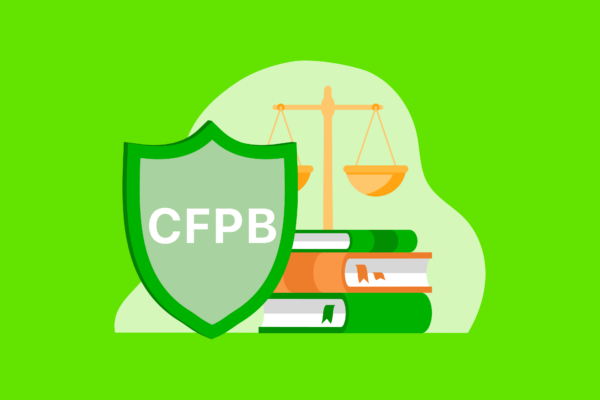Episode Description:
On today’s COMPLY Podcast episode, we hear from John Zanzarella, VP of Sales here at PerformLine, as he chats with Gary Stein, US Chief Product & Compliance Officer at Opy. Prior to joining Opy, Gary previously led policy-making efforts and a team of subject matter experts for the CFPB – covering consumer deposits, emerging and legacy payment systems, consumer-authorized data sharing/aggregation, small-dollar, and other consumer lending products.
Their discussion today revolves around key topics such as:
- Gary’s experience as a former regulator moving into the private sector, and what specifically caught his attention about Opy
- His initiatives when joining Opy from a compliance standpoint, having the history of coming from the Bureau
- The difference between being proactive versus reactive when it comes to leading with compliance
- And thoughts on where the industry lies today and the dichotomy in growth we’re seeing between various buy now, pay later firms.
Show Notes:
- Top 5 Buy Now, Pay Later Compliance Issues Across Merchant Sites: https://bit.ly/3uRIB1Q
- International Regulation Map for Buy Now, Pay Later Lenders: https://bit.ly/3MfqPva
- The Buy Now, Pay Later Compliance Checklist: https://bit.ly/3ah4XCp
- Follow John: https://www.linkedin.com/in/johnzanzarella
Subscribe to COMPLY: The Marketing Compliance Podcast
About COMPLY: The Marketing Compliance Podcast
The state of marketing compliance and regulation is evolving faster than ever, especially for those in the consumer finance space. On the COMPLY podcast, we sit down with the biggest names in marketing, compliance, regulations, and innovation as they share their playbooks to help you take your compliance practice to the next level.
Episode Transcript:
Ashley:
Hello COMPLY podcast listeners. On today’s episode we hear from John Zanzarella, VP of Sales here at PerformLine as he chats with Gary Stein, US Chief Product & Compliance Officer at Opy. Prior to joining Opy, Gary previously led policy-making efforts and a team of subject matter experts for the CFPB – covering consumer deposits, emerging and legacy payment systems, consumer-authorized data sharing/aggregation, small-dollar and other consumer lending products. Their discussion today revolves around key topics such as Gary’s experience as a former regulator moving into the private sector and what specifically caught his attention about Opy. His initiatives when joining Opy from a compliance standpoint, having the history of coming from the Bureau, the difference between being proactive versus reactive when it comes to leading with compliance, and thoughts on where the industry lies today and the dichotomy and growth we’re seeing between various Buy Now, Pay Later firms. Thanks for listening and enjoy the show.
John:
Gary, thanks so much for being here today.
Gary:
Hey John, thanks for having me, glad to do it.
John:
Yeah, absolutely. And I’m hoping maybe you can just start with a high level, how you ended up at the CFPB in the first place, what your focus was there, through the transition to Opy and really what stood out about that business of all the consumer finance companies that I’m sure would love to have been talking to you.
Gary:
Yeah, it’s, it’s a great question because honestly, first of all, just real, not a problem, but I’m the Chief Product and Compliance Officer. And I’ll get to that in a second, because I think it’s an interesting twist. But I’ve actually returned to the private sector. So I spent my first 20 years or so in banking, both as a banker and a consultant. And I worked with banks and, you know, lending deposits investments, commercial and consumer, for a long, long time. And then around the time of the mortgage crisis and forgive me, but I’ve used this joke, a couple of times, but you know, as part, financial crisis part early midlife crisis, I felt like it was time to do something else. And in my backyard here, my skillset knowledge of the industry and sit at a different seat at the table and add to something.
Gary:
And ironically, I had not really spent much time in regulatory or the compliance side of things. It was more marketing growth strategy. And I came in to lead deposits and overdrafts. The Bureau had this group called markets where they were hiring ex-industry people to sit with the regulatory attorneys and economists and examiners to drive policy. I’d love that role. My time there, you know I got to meet with advocates and industry and everybody both to inform our policy making, and help, you know, spread the word about how we were thinking about things, in an often delicate manner. My portfolio grew to include not just deposits but payments. I represented the Bureau and all government agencies on the Fed’s Faster Payments Task Force Steering committee, which is where I met the Opy CEO, Brian Shniderman who at the time was leading Deloitte’s Global Payments Practice.
Gary:
So [my portfolio expanded to include] payments, consumer data, and unsecured credit, among other things. And I met all the time with both banks and fintechs, who were looking to innovate often in the marketplace, sometimes complain about, you know, decades, old regulation, but often looking to innovate and where the path forward wasn’t always clear. And so the intent was I really liked to work with the innovators and think, how can we solve this problem together for the marketplace and for consumers? And I think they like the idea of providing, you know, maybe some vision and boundaries versus waiting and doing something and getting slapped on the wrist after effect and, you know, among those companies, I saw some great business models that, you know, if government ethics rules didn’t preclude me, I would’ve invested in and others where I couldn’t believe venture capitalists were giving them anything.
Gary:
And often, you know, they were virtuous in nature, but there was no path to profitability. And that always worried me in my colleagues because at some point, you know, whoever’s paying for is gonna come calling and desperate measures could lead towards, you know egregious acts towards consumers because they’re the low man on the totem pole. You know, they’re little consumers. One of the businesses I really liked was around this revolution I saw in lending. Whereas, you know, a lot of people struggle with credit and credit cards are great and I love my credit cards and my reward points, 50% of the population though are revolvers. They’re not, transactors, they’re not harvesting those points. And they may struggle with the fact that here’s a very powerful product that you can use anywhere, but the discipline is kind of up to the consumer as long as it’s within the credit limit.
Gary:
And then the monthly obligation to pay that off could be hard to see. And there was this emerging revolution enabled by technology and bandwidth that would enable lenders to make decisions right there at the point of sale and give you just-in-time credit. And I love this and I felt like anything that enabled an industry to manage risk is good for everybody. And so I can let John, you know, that, yes, I know where you’re at, what you’re doing. And that can help me make a more informed risk decision. And as a result can make that product more affordable. And so I talked with the, Buy Now Pay Later companies, and then around the end of 2020, another election looming, I had lived through one had just finished the, ANPR for section 1033.
Gary:
And it was a good pause time, and Brian who was at Deloitte still said he had this client an Australian, you know, a Buy Now Pay Smarter company that was looking to come to the US and wanted to establish a management team. And I thought the planets are aligning here. I love this business model. I love the DNA of the company and the commitment to responsible banking. I love the fact that it was not, you know, hey, come work with me in my garage and eat noodles and noodles. It’s like we have an eight-year-old established company and track record and we want to build something here, and so there’s a foundation. And it was just the right jumping off point. And so Brian left actually Deloitte to become the CEO of Opy USA. I joined as the Product to Compliance Officer, which, you know, I think was his idea and really tries to marry the idea of we’re trying to innovate and do it responsibly. So I thought that was fantastic and we’ve put together a rockstar team and I don’t think I’ve taken a breath since that time, it’s been about a year and a half.
John:
Well, that’s awesome. And you can hear the enthusiasm for the product side of it and shame on me for not realizing the chief product officer part of it earlier. But, you know, I think it, it’s cool with PerformLine, you know, we have had a chance to interact with a ton of compliance professionals over the years, and we’ve seen compliance go from, you know, something that wasn’t viewed, as maybe on the management team or as forward facing as it is today with all that’s going on. And so to hear you talk about things like innovation and being product focused while still having the oversight and the background that you do, maybe you can share a little bit about you’re coming into Opy, your leading compliance along with product, what is the approach you’re taking from a compliance standpoint, having the history that you have being at the Bureau?
Gary:
Yeah, it’s interesting and it’s twofold, you know, in one case we had to take, you know, we’re already operating for eight years in Australia and, UK and New Zealand as well. And so we’ve got something and we wanna lift and bring it to the US. And so we actually went through just a litany, here’s all US regulations, state, and others that are going to apply. And we’re trying to map them over to what we’re doing and to make this fit for the ecosystem. Now, interestingly, it’s, it was more than adjust for the regulatory framework here, which is, I think we’ve verified a little more specific and extensive than in Australia and other places. But also we’ve adapted our strategy. We’re in Australia, you know, we, we, we cut our teeth lending in eCommerce and retail, usually smaller dollar amounts often to some younger consumers who would kind of use the product and demonstrate adeptness with it and could graduate up.
Gary:
And we went into bigger ticket services, like dentistry and auto servicing. And most folks would kind of do that after they’ve used us to buy t-shirts or tennis shoes or something. Whereas in the US, we saw a crowded BNPL market and we saw a need in the services industry where we could be more differentiating. And so we’ve started directly into healthcare and auto servicing. And a lot of these are non-discretionary purchases, like no one plans to have a transmission repair or a crown or a puppy surgery or something like that. And so these can be big ticket items. And so we also had to adopt the product and platform for starting out at the deep end of the pool. And so the, we literally started going through what we did and thinking about how we map it over and that transformation, I think, for the strategic side, as well as the regulatory side was pretty substantial. So that got us to our baseline needs for things. And then, but the beauty of it was at the core, there was a parent company that really had made a strong commitment to responsible banking. And what’s interesting is that a lot of the regulatory changes and disclosures and consent capture that we’ve introduced in the US they’re adopting also in Australia on a voluntary basis because they like the transparency and the confidence it instills in consumers.
John:
Yeah. It’s really interesting. And, and I look at it sometimes proactive versus reactive when it comes to compliance. And again, you know, our company’s been around for 15 years. I remember times where the people, we would talk to viewed compliance as more of a reactive thing. Hey, if something happens, Hey, after we launch, if we get in trouble and I remember meeting you early on, as we were getting to know Opy, and you know, one of the goals was to have some automated compliance tools in place, in advance of launch. To have that and be buttoned up. And maybe you could just talk a little bit about that, and from a regulatory standpoint, you know, it seems like the regulators are really looking for companies to be more proactive, is that your take on it as well?
Gary:
Well, I, you know, they don’t always come out and say it, but I do think they imply it. So it’s funny, as I said, I was a consultant before I joined the Bureau. And I, I like to joke that to me, and, and I was working on like a new product rollout or marketing and you build a work plan. And to me, legal and compliance were just two month delays on any project. Like, all right, we gotta run it by these guys. And John, you said it very well. I agree with you. And this is what I tried to, this is what I embraced at the Bureau, which is if you do this at the beginning, and which is what we try to do as we formulate this for the US, you’re not, you’re not like jerry-rigging, you know, oh, we gotta add this here or there, there’s a little bit of that for us, because we had a working Australian platform, but you’re really trying to build it in what’s the right way to do this ahead of time.
Gary:
You know, how do we wanna set this up? And you know, that means engineering, your flows, your work processes, but also everything you do around that to manage that compliance. And that includes how we think about our marketing and our messaging to consumers and how our partners do that and how we, you know aren’t reactive to, hey, we did this now, oh did we do it right? Do we have to pull that back? I mean, I’d be lying if I didn’t say, look, we are just like every other organization, we identify issues. We have to implement corrective action. We have things that go on, but we do try to get it out in front of them. And we try to go through a rigorous review process and everything to minimize the surprises.
John:
Yeah. It’s cool to see. And it’s refreshing, we’re seeing a lot more of it, but especially companies who are leading with compliance. And I do wanna talk a little bit about Opy itself, but maybe we’ll just level set on, on the industry and, and some of what got us to today. So throughout the pandemic, right, we saw huge increases in usage of Buy Now Pay Later for purchases online, specifically from some of the younger generations who, for many of them, probably their first access to capital to make some of those purchases. And then more recently there’s a number of different contributing factors to some of the decline in usage and a shift in some consumer sentiment. And of course, because of that, we’ve seen some consolidation of Buy Now Pay Later companies and also, you know, some layoffs, but through that, some of the companies continue to grow and continue to get funding and, and Opy is one of them. So why don’t you talk a little bit about the business model at Opy I know you highlighted a little bit, but talk about that and, what you think is next for the industry as a whole.
Gary:
Yeah. So I think there’s a lot of things that drove Buy Now Pay Later taking off. You know, let’s face it, the fact that we’re all confined to our homes and had nothing to do, but shop online kind of is gonna boost anything connected to an online shopping industry. And so planned or unplanned, I think that helped to move forward Buy Now Pay Later. I think we’ve also, we’re seeing, this has always been my theory. We’re seeing the impacts of the CARD act, play out a little bit where younger consumers aren’t getting credit cards as early, or at least embracing the use of them as well. And so they’re a little riper for other forms of credit that they might feel is more custom tailored to what they’re doing. And so that’s helped as well. And then honestly, you know, well, let’s be honest, a lot of what’s what’s now coming to be known as Buy Now Pay Later and why we, I won’t say disassociate, but would at least talk about ourselves in an evolved state from that pay-in-four model, where consumers can split a purchase up into four payments and for no fee and in the US that removes some obligations from the Truth in Lending Act.
Gary:
So, but what it, you know, there’s no question that when credit is appears to be free, that’s anything that’s free. It’s gonna help, you know, with the, the pickup of that. I think what we’re seeing now is gonna be, just as what, the first internet boom, we saw some.coms and not every business model survived. We’re seeing some adjustment from that. And I think that my old employer, the CFPB and others are helping to provide some guiding light for that by pointing out where they see weaknesses in the armor. You know, as I said, when we, when OpenPay is the parent company in Australia and, and we go by the Australian stock ticker symbol Opy here in the US, because the word open had been used in a few other contexts. Well, like I said, we thought, you know, we’re not gonna start where everybody else is.
Gary:
There’s a land grab going in the e-commerce space. I mean, a year ago we had a consultant working with us who was buying some glue for a home repair, $6 tube of glue, and got the offer to split it up into four easy payments of a $1.50. More recently, I have seen burritos being offered on a pay-in-four model, like, you know, you can get some big burritos at some places, but not enough to spread the cost over two months or anything like that. So I do think there’s some over-proliferation and, you know, it goes back to what I said when I was over at the Bureau, in a land grab mentality, scale is big, but if there’s no path to profitability, something is gonna break. So we’ve tried to build a lasting model here. We came in and we looked at places where Buy Now Pay Later, wasn’t prevalent, point of sale markets and specifically in bigger ticket markets where you couldn’t do pay-in-four, you know, there’s too much risk.
Gary:
And so we’ve started in dentistry, veterinary, auto servicing, again, non-discretionary areas. There are entrenched players in those markets, but we think we stack up really good. So rather than battle everybody in a crowded retail space where everybody looks the same and they’re giving it away for free and everything, we can go in there against players that are using private label cards or deferred interest programs, you know, things that aren’t necessarily always transparent about how the cost of consumer may bear, if things play out a certain way and go in with the value proposition that says, look, we do charge fees, this is still a credit. But there’s no compounding interest and there’s no surprises. There’s no gimmicks, there’s no gotchas. You know what we quote you is what it’s going to be. You know, there’s no interest rate escalation, there’s no balloon payment, there’s no deferred interest.
Gary:
And we can tell customers while we have to disclose an APR, and we use that to our advantage. I think we were just looking at this this morning. People wanna know what’s their monthly obligation gonna be, can I afford to do this? You know, can I afford to repair the car that takes me to, and from work in a post COVID environment or something, you know. And I’m not sure I can afford $3,000 and put it on my credit card because I know I’ll have time to pay it off, but there’s gonna be some revolving interest. But if I know this is gonna cost me $95 a month for 12 months, and the repairs will last that long, you know, I can do this and it’s a good value trade off. So we’re helping customers make more informed decisions, giving them greater confidence and control and putting them, you know, in a position to be better borrowers.
Ashley:
Thanks for listening to this episode of the COMPLY podcast! We hope you enjoyed the conversation between John and Gary on the road ahead for Buy Now Pay Later compliance professionals. For additional insights into all things marketing compliance, you can head to content.performline.com, and be sure to check out the links and resources in the show notes. Thanks again for listening and we’ll see you next time!




